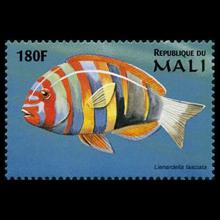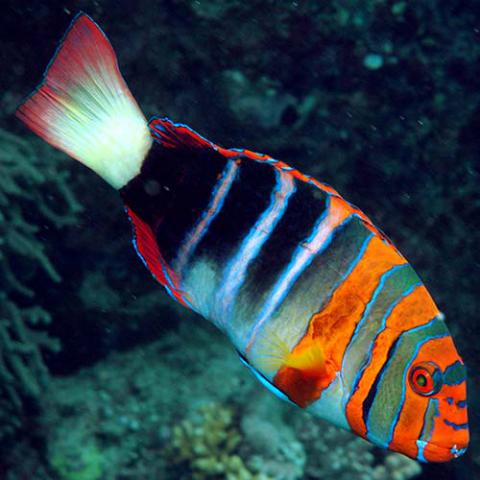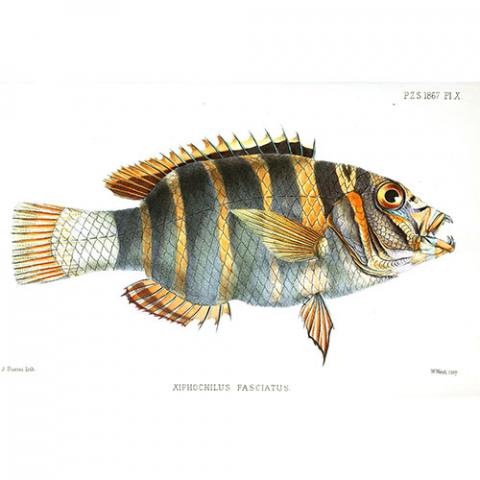NAMES
TAXONOMY
Mali
Issued:
Stamp:
Choerodon fasciatus
Mali
Issued:
Stamp:
Choerodon fasciatus
Mali
Issued:
Stamp:
Choerodon fasciatus
Genus species (Animalia): Choerodon fasciatus
The harlequin tuskfish, Choerodon fasciatus, is a species of wrasse native to the western Pacific Ocean. It occasionally makes its way into the aquarium trade.
Description
The harlequin tuskfish grows to length of 30 cm (12 in). It is a brightly colored marine fish with shades of blue, green, and orange. It has sharp blue teeth. The specimens found in Australia generally have brighter coloration.
Diet
The harlequin tuskfish is a carnivore, eating mostly benthic invertebrates such as echinoderms, crustaceans, molluscs, and worms.
Distribution and habitat
This species is found in the western Pacific Ocean in two separate areas. One is from the Ryukyus to Taiwan and the other is from Queensland, Australia, to New Caledonia. This species inhabits reefs at depths from 5 to 35 m (16 to 115 ft). Recently, this fish has been observed to be a tool user in the sense that it will carry small clams to a home base where it will fling it against a hard surface such as a rock multiple times until it breaks open, allowing the fish to eat the soft parts. This behavior was observed multiple times and filmed in the making of BBC's TV series Blue Planet II, qualifying this fish as a tool using animal.
Reference: Wikipedia



